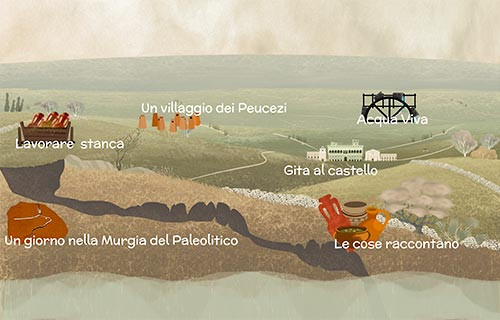Patera
| Misure | h 4,9; ø 20,6 |
| Stato | parzialmente ricomposta con cinque frammenti, permangono piccole lacune, superficie corrosa ed abrasa; coloritura quasi del tutto evanida |
| Luogo e cronologia | Salentino - Tomb. 25. Second half of the 4th century BC |
Libation was the ritual offering of liquid substances (wine, water, honey, milk, etc.) typical of the Greek-Roman world. The liquid was poured onto something that had a sacred or symbolic value, such as an altar or a stele, either on the ground or on the floor, as an offering to the Earth, to the dead or to the divinities of the Underworld. Wine was usually used in the libation ritual, but on some occasions animal blood, water, milk, honey, or olive oil were used. The recipients intended for this ritual (Patera, Kylix and Phiàle), due to their shallow cup shape, were very appropriate for the dynamics of the ritual gesture.
The libation pot called patera is a very wide but shallow cup. Originally, the vase was made of metal; the ceramic patera preserves the typical fluting of the metalworking technique. The “navel” patera is characterized by a protrusion coming from the centre of the basin, constituted by a recess on the bottom which served to facilitate its grip by the insertion of a finger.


